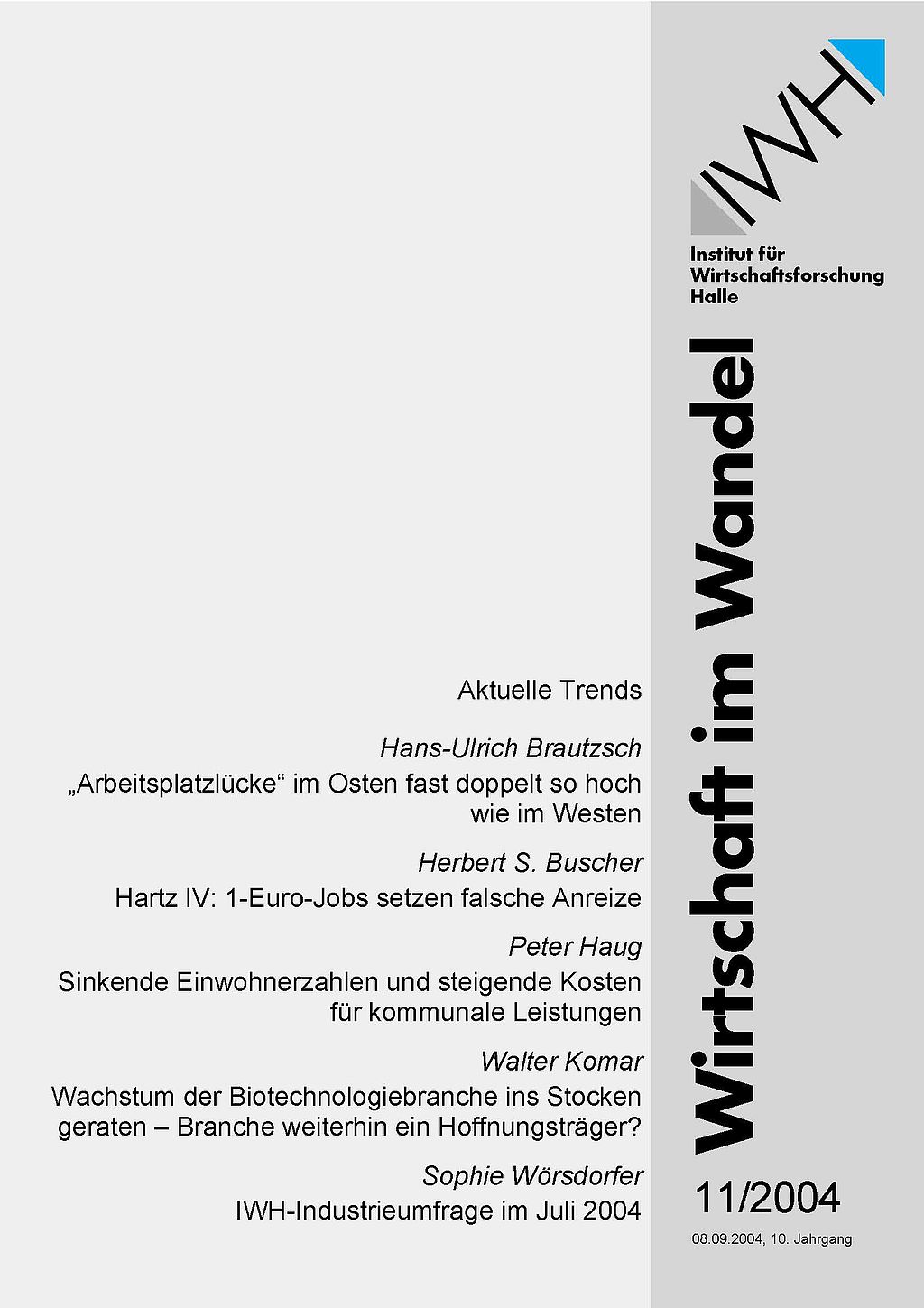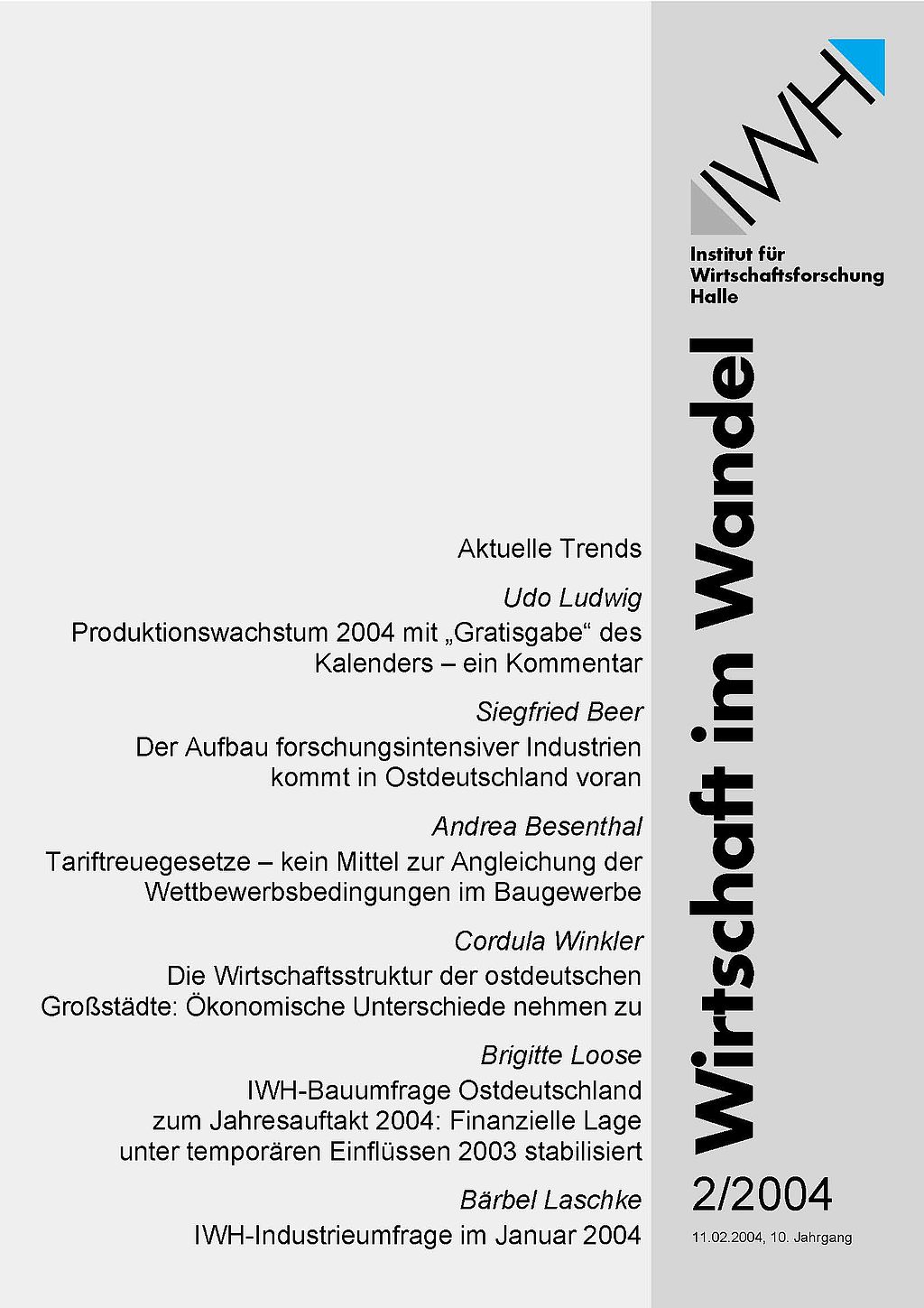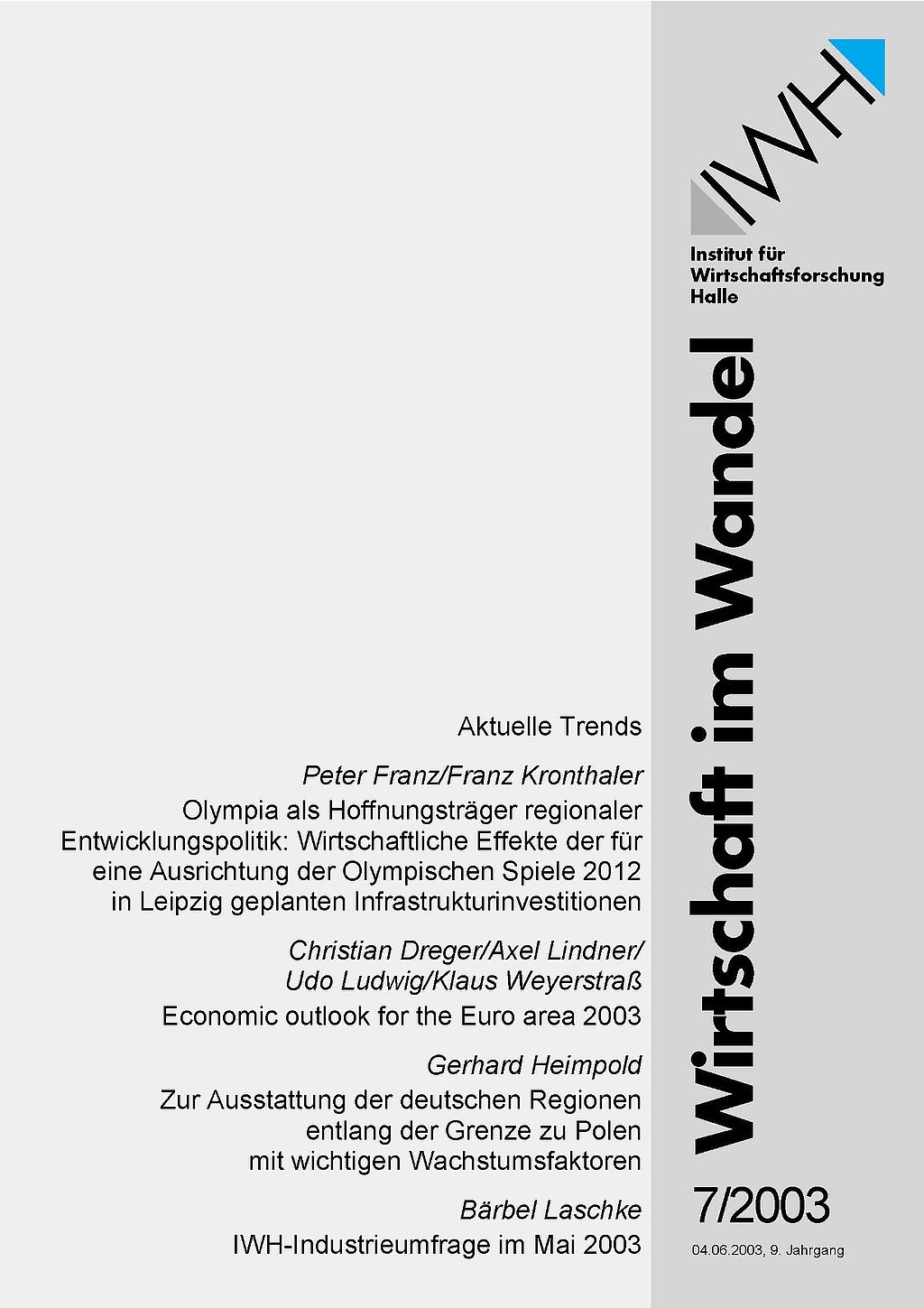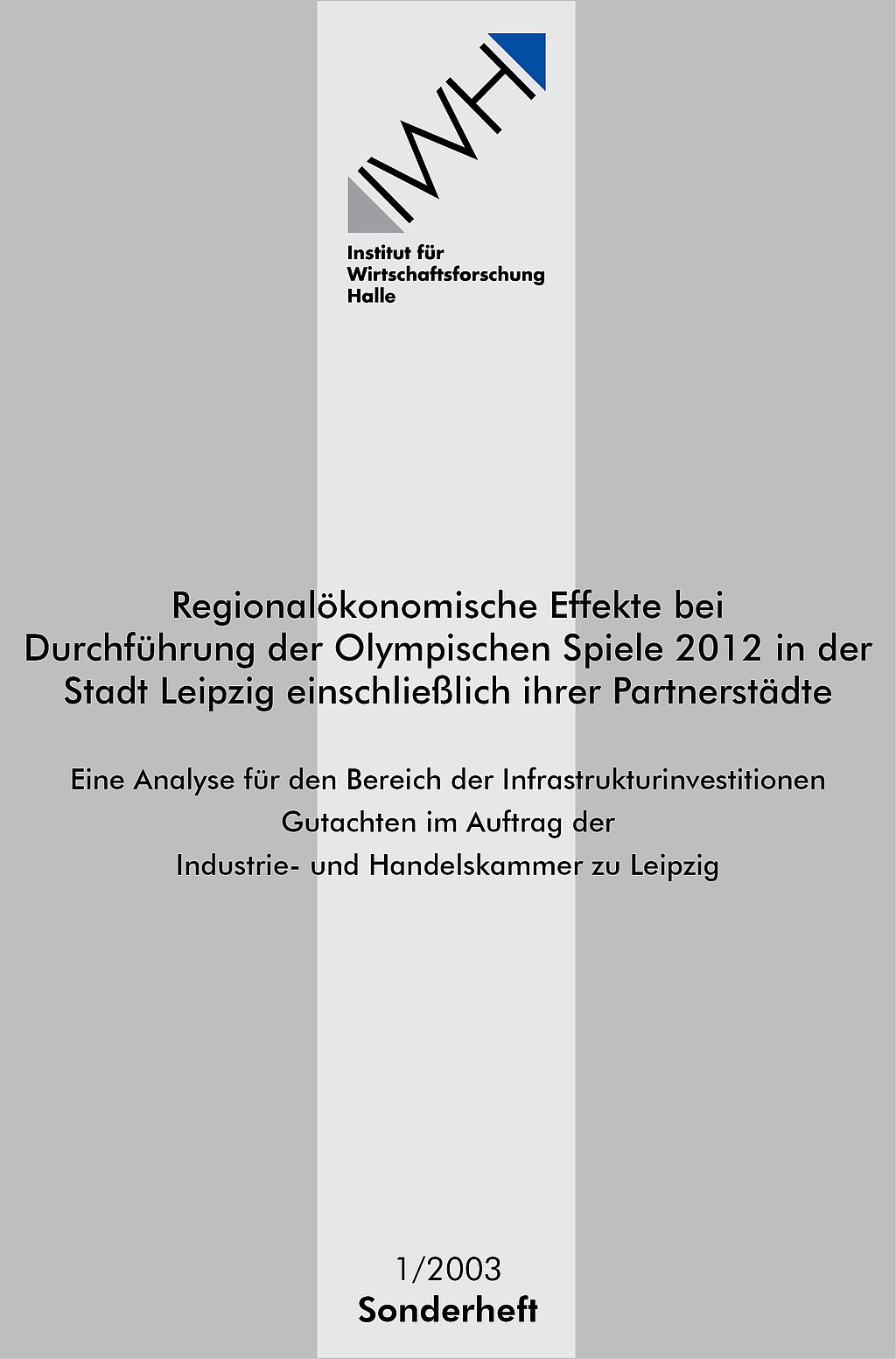Transformation tables for administrative borders in Germany – data
In order to demonstrate what kind of information the available tables contain and how they are structured, the Research Data Centre of the IWH provides selected excerpts as freely available PDF files below. Please note that the files provided upon application are in Excel format.
- Territorial transformation matrix districts 1990-2015
- Conversion table municipalities 1990-2015
- Conversion table municipalities 2015-1990
- Conversion table districts 1990-2015
- Conversion table districts 2015-1990
These files show how the territorial states of districts and municipalities of Saxony-Anhalt in 1990 can be allocated to administrative entities in 2015. The tables detail whether a specific entity (district or municipality) was merged with another entity, split up and (partly) allocated to other entities or stayed the same. The column “Anteil_Prozent” states how much of the population was allocated to (or from) the entity in the same line.
In addition the these files covering administrative changes over the whole available period (1990-2015), the RDC-IWH also provides data on shorter intervals during this time, as well as files covering year-to-year changes. These tables isolate the changes due to individual territorial reforms, such as the “Kreisreform Sachsen-Anhalt 2007”, a territorial reform that reduced the number of administrative districts in Saxony-Anhalt from 21 to 11 in 2007. Example files covering this reform are provided below.
Your contact
Oops, an error occurred! Code: 20240418032101c3a5d3cePublications

Knowledge-Based Economy and Urban Development in Germany
in: Die anderen Städte. IBA Stadtumbau 2010 - The other Cities, Bd. 4: Profilierung von Städten - Urban Distinctiveness, Berlin (Jovis) (Edition Bauhaus, Bd. Nr. 22), 2006
Abstract
The article examines the response of the German university system to an increasingly knowledge-based economy in comparison to the US. Additionally the potential role of universities in urban development is analysed. Several indicators show that several regulations of the German university system have to be changed for adapting it to the requirements of a knowledge-based economy.

Wie steht es in Mecklenburg-Vorpommern um die Ballung wirtschaftlicher Aktivitäten? - Eine Untersuchung unter besonderer Berücksichtigung der Städte des Landes
in: Rostocker Beiträge zur Regional- und Strukturforschung, Heft 18, No. 18, 2006
Abstract
Urban and regional economics put great emphasis on urban spaces and, in general, on the importance of agglomeration forces, which is of great importance for the development perspectives of structurally weak regions. This in mind, the contribution investigates the extent and the structures of economic agglomeration characteristics, using the example of the cities in the Federal State of Mecklenburg-Vorpommern. In this context, the question is raised whether the potential given there might be better used to achieve economic progress. The contribution starts with a brief theoretical overview on the importance of agglomeration forces for urban and regional development. The empirical section comprises, first, an analysis how the cities under consideration are endowed with factors being regarded as important for economic growth; second, two essential elements of agglomeration of economic activities are investigated more in-depth: spatially concentrated industries and business networks. The investigation is based on a method which was already in use within an East-Germany wide study on Economic Development Spots (project on behalf of the Federal Office for Building and Regional Planning - BBR, finished in 2004). Finally, the contribution draws implications for the economic policy at the Laender level as well as at the municipal level.

Wirtschaftliche Rahmenbedingungen Leipzigs
in: Leipzig 2020. Europäische Metropole oder mitteldeutsche Provinzperle? - alternative Visionen -, Beiträge des Workshops in Leipzig am 11. Juni 2005, 2005
Abstract
In comparing important economic indicators of several German city regions the economic future of the East German city of Leipzig is discussed . A special feature of the population in this region is the optimistic attitude with regards to the future regional development.

Declining population and rising costs for municipal services
in: Wirtschaft im Wandel, No. 11, 2004
Abstract
Population decrease in many East-German towns and municipalities does not only increase the stock of empty residential buildings. It also makes provision of network-related goods and services more costly. Considering public water and sewerage services as example, the article investigates empirically how costs of provision per inhabitant depend on population number and -density. Diverging from similar studies, spatial differences in distribution costs per inhabitant are calculated within the area of a case study municipality. The calculations are based on cost accounting data of the local provider. A central problem is the choice of an appropriate spatial key figure to allocate costs. The results indicate cost advantages in providing densely populated quarters with network-related services. Consequently, rising per-capita costs should be taken into account to a greater extent for the city conversion programmes in East Germany than they have been up to now.

The economic structure of the largest East German cities: economic differences increase
in: Wirtschaft im Wandel, No. 2, 2004
Abstract
Especially large cities come into appearance within the field of interregional competition, while trying to attract enterprises and mobile production factors. Against this background, the paper examines the economic stage of development of the largest East German cities. In addition to the actual situation we have a look at the development of cities since the middle of the 90ies. Relating to the actual economic situation, the findings show great economic differences between cities. Nevertheless, none of the large cities have taken on a leading position for all considered indicators. Instead of this each large city has its own specific strengths and weaknesses – compared with the other large cities as well as compared with East Germany on the whole. In addition, a comparison with the situation in 1995 shows, that the degree of differentiation between cities has increased. This development goes along with a strengthening of specific economic profiles, particularly in smaller large cities.

The Olympic Games raise hopes for regional development policy: Economic effects of the infrastructure investments planned for the Olympic Games in 2012 in Leipzig
in: Wirtschaft im Wandel, No. 7, 2003
Abstract
Together with the cities of Chemnitz, Dresden, Halle and Riesa the East German city of Leipzig has applied as venue for the Olympic Games 2012. With its application Leipzig competed with four economically by far stronger West German cities (Stuttgart, Frankfurt, Düsseldorf, Hamburg). On April 12, 2003 the National Olympic Committee had to elect the national candidate for 2012 out of this bundle of five applying cities and nominated Leipzig. With the organization of this big event the city of Leipzig and its partner cities expect a strong impulse for regional development. This study tries to estimate the potential economic effects of the planned investment with regard to infrastructure. Important results: Regarding directly the job effects connected with the investment and development of the infrastructure about 3,500 additional jobs are to be expected for a period of ten years. The infrastructure investment planned so far for the Olympiad will contribute only partially to eliminate important infrastructural bottlenecks in the region. Nevertheless the planned infrastructure facilities would have the effect that the new ‘olympia region Leipzig’ would remain attractive also after 2012 as venue for large sport events.

Regional economic effects of hosting the Olympic Games 2012 in Leipzig and its partner towns - An analysis of infrastructure investments
in: IWH-Sonderhefte, No. 1, 2003
Abstract
Together with the cities of Chemnitz, Dresden, Halle and Riesa the East German city of Leipzig has applied as venue for the Olympic Games 2012. With its application Leipzig competed with four economically by far stronger West German cities (Stuttgart, Frankfurt, Düsseldorf, Hamburg). On April 12, 2003 the National Olympic Committee had to elect the national candidate for 2012 out of this bundle of five applying cities and nominated Leipzig. With the organization of this big event the city of Leipzig and its partner cities expect a strong impulse for regional development. This study tries to estimate the potential economic effects of the planned investment with regard to infrastructure. Important results: Regarding directly the job effects connected with the investment and development of the infrastructure about 3,500 additional jobs are to be expected for a period of ten years. The infrastructure investment planned so far for the Olympiad will contribute only partially to eliminate important infrastructural bottlenecks in the region. Nevertheless the planned infrastructure facilities would have the effect that the new ‘olympia region Leipzig’ would remain attractive also after 2012 as venue for large sport events.

Zur Entwicklung der Wirtschaft im Kreis und in der Stadt Gotha
in: Stadtentwicklung Gotha 1990 - 2000, 2002
read publication
Housing vacancies in East Germany: There is more than one way to look at it
in: Wirtschaft im Wandel, No. 11, 2001
Abstract
New up-to-date data about housing vacancies in East German cities allow a more differentiated interpretation of the disparities in the East German housing market. The data show that the cities in Saxony and in Saxony-Anhalt are disproportionally affected by this problem. They also show that the modernizing and renovating activities of the housing associations and cooperatives themselves contribute to the rising vacancy rate.

Housing Vacancies in East German Cities: A Problem not only for Housing Policy
in: Wirtschaft im Wandel, No. 2, 2001
Abstract
In numerous East German cities extreme imbalances in the housing market have developed with the consequence of extensive housing vacancies. Primarily inner city housing units constructed in the late 19th and early 20th century and housing units constructed within the period of the socialist regime are concerned. The causes for these imbalances can be found in decisions of socialist urban planning, in demographic factors, in oversized federal promotion of new housing construction after the German unification, and in income increases of private households. The commission “Structural Change in the Housing Economy of the New Länder“, installed by the federal government, has examined this problem and submitted preliminary political recommendations on the federal level in order to reduce the housing market imbalances. The commission recommends federal subsidies for tearing off vacant housing units within a period of ten years. A measure like this raises the question how the risk can be handled that too many flats are torn down. In addition, the commission recommends to double the subsidies for households acquiring already existing flats for own use and to halve the subsidies for households investing in newly built owner-occupied housing in East Germany. These incentives to acquire existing housing units might prove too weak because of the strong preferences of East German households to live in single-family houses. Measures on the federal level can support but cannot replace necessary concrete planning and solution strategies in the vacancy-plagued cities “in situ“.



